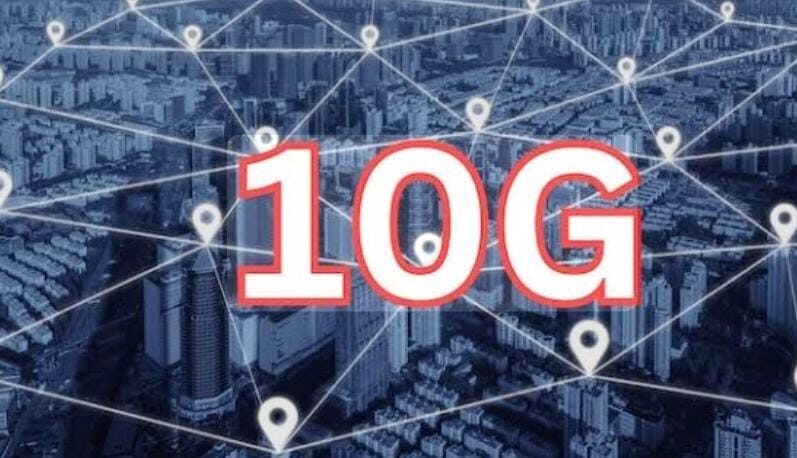What is the difference between 5G and 10 G?
In the fast-paced world of technology, buzzwords like 5G and 10 G have taken center stage. Despite their resemblance, these two technologies have very different applications, infrastructures, and goals. Understanding the difference between 5G and 10 G is essential for consumers, tech professionals, and business leaders aiming to stay ahead in the digital age. This article breaks down what each term means, their core technologies, and how they impact our daily lives.
Understanding 5G: The Fifth Generation of Mobile Networks
5G stands for the fifth generations of cellular networks Technology’s. It is the direct successor to 4G LTE and is designed to improve mobile internet connectivity. Introduced globally in the late 2010s, 5G is being rolled out by major telecom providers to enhance wireless communication across a wide range of devices.What is the difference between 5G and 10G?
Key Features of 5G:
Speed: Theoretically up to 10 Gbps, though real-world speeds typically range from 100 Mbps to several Gbps depending on network conditions.
Low Latency: As low as 1 millisecond, enabling real-time communication.
Higher Devices Capacity: Can support up to 1 millions device’s per square kilometre.
Network slicing lets carriers give different services or applications specific amounts of bandwidth.

Energy Efficiency: Optimized to consume less power than previous generations.
5G users a combinations of low- and, mid-band, and high-end (millimetres wave) spectrums to deliver its service’s. Low-band covers large areas but at slower speeds, mid-band balances speed and coverage, and high-band offers ultra-fast speeds but limited range.
Understanding 10 G: The Future of Wired Broadband
Contrary to popular belief, 10 G is not a next-generation mobile network like 5G. The “G” in 10 G actually refers to gigabits per second rather than “generation.” 10 G refers to the future of home and business broadband, promising 10 gigabits per second internet speeds delivered over wired infrastructure such as fiber-optic and coaxial cable.
Promoted by organizations like CableLabs and supported by major internet service providers like Comcast, Charter, and Cox, 10 G is designed to supercharge broadband networks by:
Increasing download and upload speeds.
Reducing latency to levels suitable for real-time applications.
Supporting symmetrical speeds, meaning uploads are just as fast as downloads.
Providing a stable, always-on connection for homes and businesses.
DOCSIS 4.0, a cable broadband technology that enables service providers to upgrade their infrastructure without having to start from scratch, is being used to build 10G.What is the difference between 5G and 10 G?
Key Differences Between 5G and 10 G
Thought the name’s are similar, 5G and 10 G differ significantly in allmost every aspects:
Feature. 5G 10 G
Meaning 5th Generation mobile network technology 10 Gigabits per second wired internet
Type: Wired broadband internet and wireless mobile communication Speed Up to 10 Gbps (theoretical) 10 Gbps symmetrical
Latency Around 1 ms (in ideal conditions) Extremely low, similar or better than 5G
Infrastructure Cell towers, small cells, antennas Fiber optics, coaxial cable
Mobility High – designed for on-the-go connectivity Low – stationary, in-home or business use
Primary Use Cases Smartphones, IoT, autonomous vehicles Streaming, VR/AR, smart homes, remote work
Providers Mobile network operators Cable and internet service providers
Deployment Stage Widely available Emerging, in testing and early rollouts
Real-World Applications
5G Use Cases:
Mobile Communication: Enhanced speed and capacity for smartphone users.
Smart Cities: Real-time traffic control, public safety systems, and smart infrastructure.
Healthcare: Low-latency communication enables remote surgeries and telehealth.
Autonomous Vehicles: Reliable and fast connectivity for navigation and control.
IoT Devices: Seamless connection of multiple smart devices in homes and industries.
10 G Use Cases:
Ultra-HD Streaming: Simultaneous 4 K or 8 K video streaming across devices.
Remote Work and Education: Smooth video conferencing, file transfers, and virtual classrooms.What is the difference between 5G and 10th ?
Cloud Gaming and VR: High-speed, low-lag experiences for immersive applications.

Automation, security, and AI-powered appliances are all integrated into smart homes.
Enterprise Connectivity: High bandwidth and reliability for offices and digital businesses.
Complementary, Not Competing
A common misconception is that 5G and 10G are competitors. In reality, they are complementary. While 5G provides mobile users with high-speed internet, 10G ensures lightning-fast connections in homes and businesses. The synergy between these technologies will shape the next wave of digital innovation, where users experience seamless connectivity no matter where they are.
For example, you might use 5G on your smartphone while commuting, and once you arrive home, your devices switch to a Enabled broadband network for ultra-fast, stable access to streaming, gaming, and work-related tasks.What is the difference between 5G and 10 G?
Looking Ahead
The future of digital connectivity is incredibly promising. With 5G continuing to expand its coverage and 10 G entering its initial deployment phase, consumers and businesses alike are on the brink of a technological revolution. As applications grow more bandwidth-intensive and latency-sensitive, having both robust mobile and wired networks will be critical.What is the difference between 5G and 10 G?
Both 5G and 10 G are receiving significant investment from governments, telecom service providers, and infrastructure companies. In the coming years, we can expect even greater innovations in augmented reality, telemedicine, smart manufacturing, and more—all made possible by these powerful connectivity solutions.
